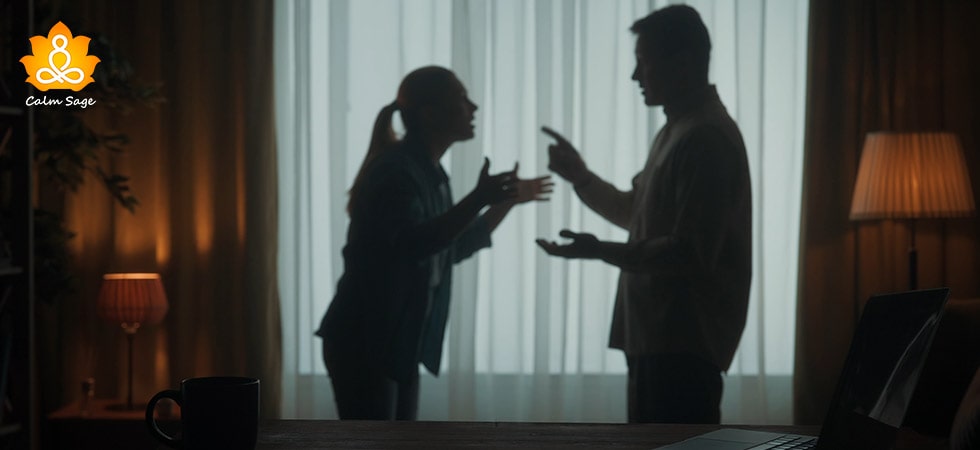‘Relationship PTSD’ Is Real! Recognize The Signs – And Ways To Heal From It

Abusive and manipulative relationships can not only leave a lasting impression on how you perceive other relationships but can also affect your mental and emotional health. Losing faith and trust in the one you love can be extremely distressing.
However, being manipulated and abused – whether emotionally, verbally, or physically – doesn’t just damage your self-worth just then. It can also make you lose your sense of security, lose your confidence, and take away your ability to trust others.
Once you close the doors to that relationship, you may hear many encouraging words from your loved one on how you’ll heal one day and that you’ll find someone better deserving of your love.
Yet, despite those words, escaping the memories of that relationship isn’t easy. And there’s a reason behind that; Trauma or post-traumatic relationship syndrome (PTRS). And just like post-traumatic stress disorder or PTSD, escaping relationship trauma isn’t easy.
What Is Relationship Trauma Or Relationship PTSD?
It is highly possible to develop symptoms of distress after a traumatic event. When after a particularly distressing event, you begin experiencing flashbacks and other symptoms, then a professional may diagnose you with PTSD.
An abusive or manipulative relationship is still considered a traumatic event and while ending the relationship may help you put a stop to the abuse, it may not free you from the after-effects. To better identify and manage this trauma, many experts call this post-traumatic relationship syndrome (PTRS).
If you experience physical, verbal, or emotional abuse in a romantic relationship, then you may have a different reaction to trauma than others who experience other types of trauma. Instead of avoiding the memories of abuse or shutting yourself against them, you may continue to rethink them, again and again.
This continuous action can get in the way of your healing and moving forward to building a safe and healthy romantic attachment in the future.
Are Relationship PTSD And PTRS The Same?
Relationship trauma or PTSD from relationship abuse can look different from your typical PTSD. With PTSD, people often experience flashbacks and intrusive thoughts when they are conscious, returning to a state of alertness. To avoid triggering the distressing memories, you may avoid everything that may remind you of the trauma.
Relationship trauma, however, doesn’t involve avoidance. With PTRS, you may find yourself being aware of your memories and the reminders of the trauma. You don’t exactly avoid the triggers or numb yourself away.
To cope with relationship PTSD, you may talk to others or you may replay the situation, again and again, doubting your actions. In some cases, you may also try to chase away the loneliness by finding a new romantic interest right away.
Of course, other key differences between PTSD and PTRS include:
- PTSD involves experiencing or witnessing physical harm, such as an injury or death. You can encounter PTRS without physical injury.
- Symptoms of PTRS include anger and frightfulness toward the abusive partner. Symptoms of PTSD may cause you to experience anger but this isn’t the only symptom.
How Does Relationship PTSD Look Like?
Relationship trauma is a real response to the aftermath of abuse or manipulation in a romantic, intimate relationship. However, it is still unrecognized in the DSM-5.
Some experts conclude that symptoms of relationship trauma may include:
- Terror, fright, or anger toward the abusive partner
- Intrusive, arousal, and relational symptoms after abuse
Intrusive symptoms are anything that causes you to re-experience the trauma. This can include:
- Flashbacks, or re-experiencing the abuse
- Nightmares
- Intrusive thoughts or ruminating thoughts
- Emotional distress when thinking about the abuse
- Sensations such as pounding heart, shaking, or sweating palms
PTSD triggers in relationships can include hearing a nickname that your abusive partner used before, visiting places you once did with your partner, etc.
Arousal symptoms are what stems from your fear response. This can include:
- Insomnia and other sleep problems
- Being on edge and having trouble concentrating
- Restlessness, crankiness, and anger
- Feelings of panic or anxiety
- Remaining vigilant to any possible threat
Relational symptoms are anything that causes you to feel stressed in your other relationships. This can include:
- Believing you don’t deserve a healthy, happy relationship
- Feeling unconsciously drawn to an unhealthy or abusive relationship
- Having a hard time trusting new romantic partners
- Feeling anxious and insecure in new romantic relationships
- Finding a lack of support from loved ones
- Isolating yourself when you feel ashamed
- Losing interest in physical intimacy
What Causes Relationship Trauma?
The direct cause of relationship trauma can be any kind of abuse in a romantic or intimate relationship. Some of the examples can be:
- Physical abuse, including direct physical harm
- Sexual abuse, including rape, sexual assault
- Emotional abuse, including gaslighting, manipulation
Relationship PTSD is a response to a lingering fear of abuse in any future relationship from a romantic partner.
How To Heal From Relationship Trauma?
Healing from trauma and PTSD can be challenging, especially on your own. Opening up to others about your abusive relationship can also be distressing, however, with a professional therapist’s guidance and support, you can heal from the trauma from a relationship.
Professional therapists can help you overcome feelings of self-blame, help you understand that the abuse isn’t your fault, process the feelings of fear, address anxiety, work through insecurity and trust issues, and work together to develop a healthy support system.
Having a strong support system can go a long way in helping you heal from the after-effects of abuse. After all, no one can offer a better sense of safety and security than your friends and family members.
Other emotion-focused coping strategies like meditation, journaling, and expressive arts can also help you control your emotional response to situations you feel like you’re unable to control.
If your partner is healing from a past relationship trauma then you can:
A. Give them space: There will be times when they’ll want to be near you while other times, they won’t want to be near you. Give them the space they need to heal. Don’t push them.
B. Keep communication open: If you feel that they’re not expressing their feelings clearly, ask them. Better communication can always strengthen a relationship.
C. Respect boundaries: Learn about their PTSD triggers in the relationship and make sure you avoid those triggers. If you’re not clear about their boundaries, ask them to share them with you.
D. Validate their experience: If they keep taking the blame for the past abuse on themselves, you can gently offer them affirmations and validation that they’re not at fault.
E. Seek relationship counseling: One-on-one therapy can help your partner heal from the abuse, however, relationship counseling can help the both of you learn how to navigate relationship trauma and heal as a couple.
Without the right guidance and support, it can be difficult to heal from relationship trauma or relationship PTSD. Not being able to share your distressing experience in a safe space can leave you feeling lonely and alone in your struggles.
If you’re self-blaming then you may be struggling with feelings of guilt and unworthiness. With the right support, you can learn to let go of these feelings and heal.
Relationship abuse and the trauma after can cause lingering fear of being in a romantic relationship again. However, with the right support and time, you can heal from relationship trauma.
Finding It Hard To Trust Others, Therapy Can Help
For more, you can connect with us at info@calmsage.com or DM us on social media. If you found this article helpful, let us know in the comments below!
Take care.




















